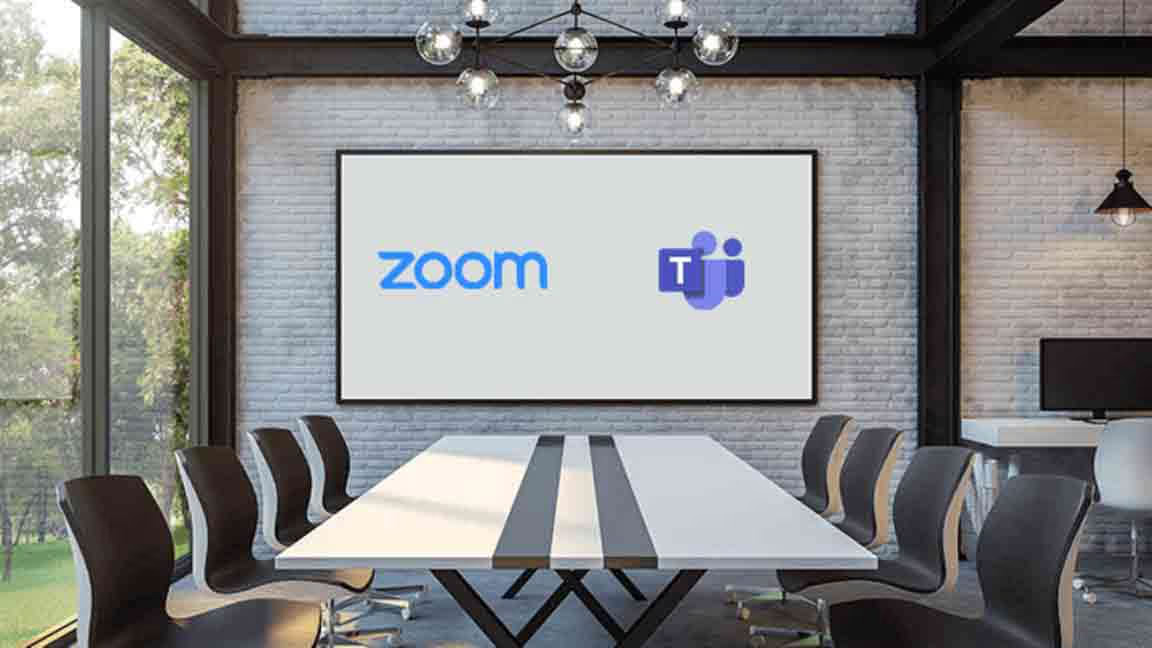Are you always having to repeat yourself in video conference meetings?
Do your 15-minute catchups turn into a half-hour of trying to decipher what’s being said?
You are not alone.
87% of professionals are frustrated and stressed due to technology failures in meeting rooms.
Without intelligible audio, a meeting is not a meeting at all. Good audio should be seamless, natural, high quality, reliable and easy to use.
Here are some ways that high-quality audio will improve your meetings:
- Enhances focus by filtering out background noise
- Decreases errors that occur due to miscommunication
- Reduces the need to repeat information
- Lessens participant fatigue and frustration
- Integrates remote participants fully into the discussion
- Shortens meeting length which can save costs
- Creates confidence in meeting hosts and presenters which leads to improved return on investment (ROI)
With the rise in remote work and learning, it is essential remote participants can hear and be heard within the conversation.

83% of professionals depend on technology to conduct meetings and collaborate.
Many rooms have been equipped with impulsive purchases and placement of generic speakers, microphones, and other equipment, which inconsistently deliver “good enough” audio. If the audio is only “good enough” or worse, this can have many disadvantages including reducing efficiency and productivity.

There are a few different aspects to consider if you are to achieve a good audio outcome in your rooms - speakers, microphones and DSP, and room acoustics.
Speakers:
When it comes to speakers, the correct type and placement are essential. For example, installing a soundbar at the front of a large room will mean that the volume will vary significantly between those seated at the front and those at the back. If the volume is too loud or too soft, participants can become unnecessarily fatigued.

A soundbar in a small room can be effective, but in larger spaces, multiple ceiling or surface mount speakers will deliver a better result. These types of speakers can vary in dispersion, as such, different speakers will require different quantities in order to achieve uniform coverage.
Microphones:

There are many different types of microphones to choose from. The list is endless. We talk more about this in our blog about which microphone is best for your conference room.
If you think your microphones are not up to the task, before investing in new microphones review the room acoustics first. You can read more about this below.
Similar to speakers, the correct type and placement of microphones is critical. For example, fixed table microphones may not be suitable if participants like to move around the room a lot while they are talking, or if the space is flexible and the room configuration changes.
Wearable wireless microphones e.g. bodypack with lapel mic, will ensure consistent performance in this scenario but can be expensive, require constant charging (or new batteries) and are more susceptible to physical damage.
Ceiling microphones remove clutter from the table, can offer great coverage and are often ideal in flexible spaces. However, their performance can be negatively impacted by a noisy HVAC (heating, ventilation, and air conditioning) system and especially by poor room acoustics.
In order for any type of microphone to perform it will require a level of DSP (Digital Signal Processing) to prevent feedback loops, mix multiple channels, control gain and remove background noise. We'll elaborate on this in our next blog also.
Acoustics:
Arguably the most important aspect of conference room audio is the acoustic performance of the room or space.

Room acoustics are split into two aspects: speech intelligibility and speech privacy.
Speech Intelligibility is how clearly and how well speech can be understood.
To achieve high levels of speech intelligibility, the room must have minimal ambient noise (35dBA or less) and control of late echoes and reverberation.

The Australian Standard AS/ NZS 2107:2016 recommends a reverberation time range of 0.2 to 0.4 seconds for dedicated conference rooms.
To achieve speech privacy in a room, noise that exits and enters the room must be minimised.
Speech privacy is essential for many reasons, including protecting confidential and/or sensitive information.
To optimise speech privacy you need to consider sound leakage. Sound can travel, or leak, through incorrectly specified walls and doors as well as through ceiling cavities.
It is recommended that any conference room wall partitions are built from the floor all the way to the concrete slab above to prevent sound travelling outside the room via the ceiling cavity.
Additionally, the walls themselves should be constructed using the correctly rated acoustic plasterboard, or double-glazed glass. Absorptive materials such as acoustic wall panelling, acoustic ceiling tiles, and other soft furnishings will also help, not just with speech privacy but also speech intelligibility.

Another option for improving speech privacy is sound masking. This is the addition of sound artificially introduced into an environment to mask unwanted sound, or in this instance, confidential conversations leaking out of a conference room to surrounding areas. It is not an active control, rather, it reduces or eliminates the perception of sound to the listener.
We along with most other AV Integrators have the knowledge and equipment to assess how your rooms perform, and can provide input and solutions to improve them. We can also provide advice on how to achieve the best outcomes in any new rooms. Although for detailed acoustic reports and designs, and solutions for particularly challenging environments, we recommend engaging a qualified acoustic consultant.
Ultimately, speakers, microphones, and acoustics all work together. To achieve the best outcome, it is about striking the right balance.
For more information about improving your conference room audio, email us via the contact form, and we will get back to you shortly.



